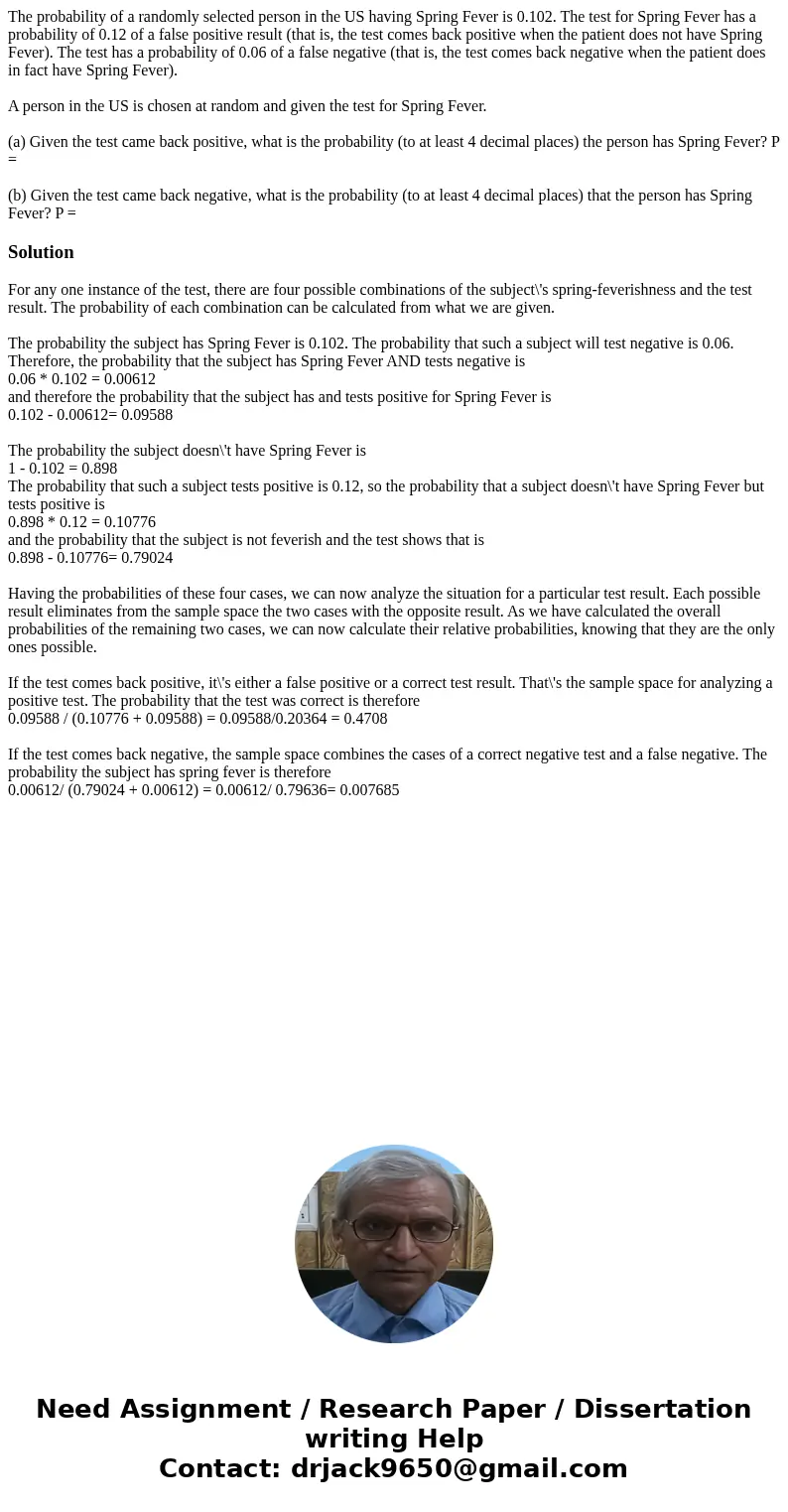The probability of a randomly selected person in the US havi
The probability of a randomly selected person in the US having Spring Fever is 0.102. The test for Spring Fever has a probability of 0.12 of a false positive result (that is, the test comes back positive when the patient does not have Spring Fever). The test has a probability of 0.06 of a false negative (that is, the test comes back negative when the patient does in fact have Spring Fever).
A person in the US is chosen at random and given the test for Spring Fever.
(a) Given the test came back positive, what is the probability (to at least 4 decimal places) the person has Spring Fever? P =
(b) Given the test came back negative, what is the probability (to at least 4 decimal places) that the person has Spring Fever? P =
Solution
For any one instance of the test, there are four possible combinations of the subject\'s spring-feverishness and the test result. The probability of each combination can be calculated from what we are given.
The probability the subject has Spring Fever is 0.102. The probability that such a subject will test negative is 0.06. Therefore, the probability that the subject has Spring Fever AND tests negative is
0.06 * 0.102 = 0.00612
and therefore the probability that the subject has and tests positive for Spring Fever is
0.102 - 0.00612= 0.09588
The probability the subject doesn\'t have Spring Fever is
1 - 0.102 = 0.898
The probability that such a subject tests positive is 0.12, so the probability that a subject doesn\'t have Spring Fever but tests positive is
0.898 * 0.12 = 0.10776
and the probability that the subject is not feverish and the test shows that is
0.898 - 0.10776= 0.79024
Having the probabilities of these four cases, we can now analyze the situation for a particular test result. Each possible result eliminates from the sample space the two cases with the opposite result. As we have calculated the overall probabilities of the remaining two cases, we can now calculate their relative probabilities, knowing that they are the only ones possible.
If the test comes back positive, it\'s either a false positive or a correct test result. That\'s the sample space for analyzing a positive test. The probability that the test was correct is therefore
0.09588 / (0.10776 + 0.09588) = 0.09588/0.20364 = 0.4708
If the test comes back negative, the sample space combines the cases of a correct negative test and a false negative. The probability the subject has spring fever is therefore
0.00612/ (0.79024 + 0.00612) = 0.00612/ 0.79636= 0.007685

 Homework Sourse
Homework Sourse